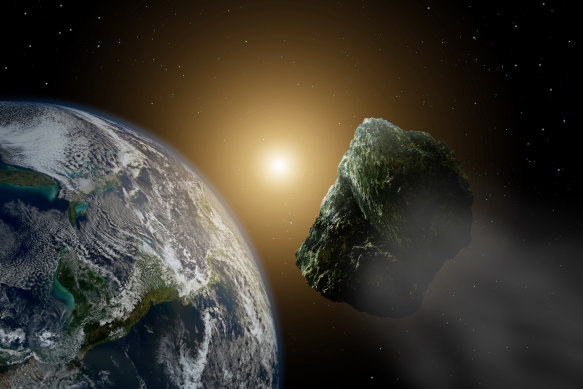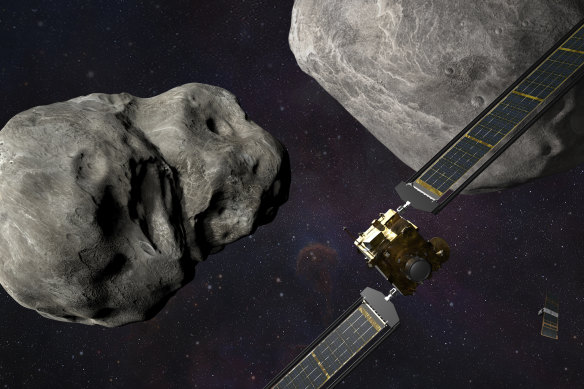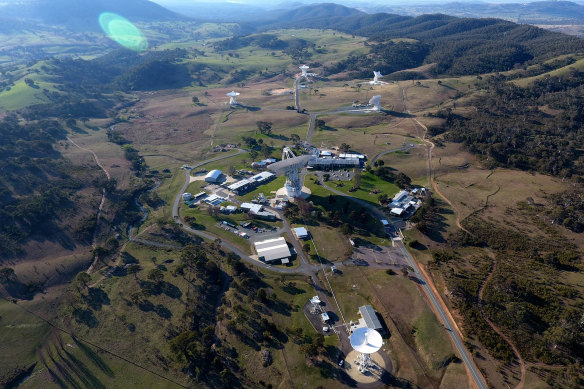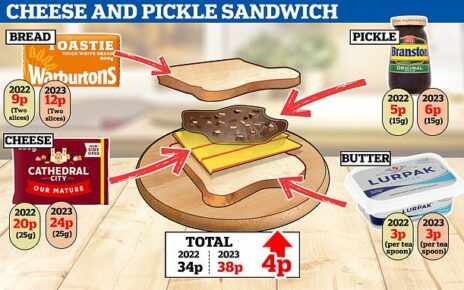Examine, a free weekly newsletter covering science with a sceptical, evidence-based eye, is sent every Tuesday. Below is an excerpt – sign up to get the whole newsletter in your inbox.
Three years ago, a city-killing asteroid narrowly missed Earth. And no-one knew about it till it whistled past.
Asteroid 2019 OK passed just 77,000 kilometres away from the Earth’s surface – well inside the moon’s orbit. It was the largest rock to come so close for 100 years.
“[If it hit Earth] it would make the bang of a very large nuclear weapon – a very large one,” Associate Professor Michael Brown, from Monash University’s school of physics and astronomy, said at the time when he tipped me off.
Are we ready for a killer asteroid?Credit:iStock
Our story on that near miss provoked a furious external response from NASA, and a lot of internal soul-searching about how they missed it, BuzzFeed later revealed.
I was thinking about that story this morning as I watched NASA successfully slam its DART spacecraft into a small asteroid.
We’ll soon know if this blunt-force approach could work to deflect a killer asteroid in our path. But you can’t fight what you can’t see. So, just how good are we at actually spotting dangerous space rocks?
Sneakin’ up on us
In 2005, US Congress directed NASA to set up a program to spot 90 per cent of near-Earth-orbit asteroids 140 metres or more in size.
Fifteen years later, a report by the National Academies of Sciences revealed NASA was nowhere near that goal and could not possibly accomplish it using current telescopes.
After that – and the kick in the pants from 2019 OK – NASA has now committed $600 million to build a space telescope specifically designed to pick up many of the asteroids it is missing.
That mission, called the NEO Surveyor, is due to launch in 2026. Until then, there are still quite a few ways an asteroid could sneak up on us.
Artist’s rendering of NASA’s DART probe, foreground right, and Italian Space Agency’s LICIACube, bottom right, at the Didymos system before impact with the asteroid Dimorphos, left.Credit:AP
Some asteroids come towards Earth from the direction of the sun, and “telescopes work at night”, says Brown. That’s part of how 2019 OK slipped through NASA’s net. The Chelyabinsk meteor, a 20-metre rock that exploded over Russia with the force of about 500 kilotons of TNT in 2019, performed the same trick.
Alternatively, an asteroid might have a very elliptical orbit that takes it a long way from Earth, so we wouldn’t see until it was too late, says Brown. “There’s always going to be a small chance.”
But astronomers have an increasing number of tools to spot asteroids. Space-based telescopes can spot them in visible or infrared light, as can visible-light telescopes on Earth.
And scientists have become very good at using big dishes such as those at Canberra Deep Space Communication Complex to hit asteroids with radio waves; other dishes can then pick up the radio reflections, allowing them to work out the shape and trajectory of the rock.
The Deep Space Communication Complex in Canberra.Credit:NASA / Supplied
“Until recently, most of the operations were done in the US. But four or five years ago, we developed a lot of these techniques here in Australia – and we’re now one of the best in the world at doing planetary defence,” says Guifre Molera Calves, who works on planetary defence observations at the University of Tasmania.
This morning’s DART collision will give us even more useful data. We should soon know how far it managed to budge the asteroid off its orbit. If it’s a lot, that will give us confidence we can successfully push away asteroids when they are quite close to Earth. If DART barely budged it, we’ll know we need to intercept rocks much further away, says Australian National University astronomer Dr Brad Tucker. That data can then inform our asteroid surveys.
Billionaires and bulldust
SpaceX billionaire Elon Musk has long been warning about the civilisation-scale risk humanity faces from killer asteroids. That’s part of the reason he thinks we should colonise Mars.
What surprised me today, though, when speaking with scientists charged with actually doing the work of spotting these killer asteroids is … they are universally a lot less concerned than Musk.
Brad Tucker: “We don’t have to worry unnecessarily about it – not as much as one would think.”
Michael Brown: “Short term, planetary defence is way cheaper and more doable with existing technology than setting up a plan B on Mars.”
Professor Phil Bland, founder of the meteorite-tracking Desert Fireball Network: “We know there’s a very good chance we won’t get hit by something that’s going to do a lot of harm over the next century.”
Scientists who study a risk tend to be the most worried about that risk – so this level of optimism is interesting. Where does it come from?
Bland says that since the mid-’90s, we’ve become very good at tracking the largest objects – those more than a kilometre wide. “And we can be pretty sure that there’s nothing big breathing down our necks.”
But looked at over a long enough time scale, isn’t it inevitable that a killer asteroid will hit Earth? “Statistically, yes – if your statistics are flawed,” says Tucker. “But when your timeframes are thousands to tens of thousands of years, it’s not quite the same argument.”
If such an object does cross our path, we’ll have a lot of advance notice – in the order of decades. That should (surely?) be long enough for us to get our act together.
Compare the risk of an asteroid to, say, the risk of a pandemic. Before the mid-’90s, we did not know how big a risk we faced from an asteroid strike and we did not have a tool to deal with it. Now we do. Yet we still lack the tools to know where the next pandemic is coming from – or to stop it when it emerges.
Our ability to detect and deflect asteroids is a real triumph of science, Bland says. “Now we’re actually in a much better place to deal with them.”
Enjoyed this article? The Examine newsletter explains and analyses science with a rigorous focus on the evidence. Sign up to get it each week.
Most Viewed in National
From our partners
Source: Read Full Article




